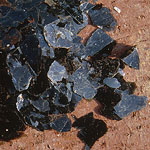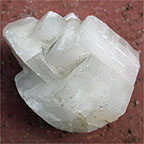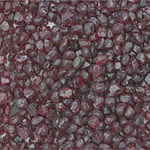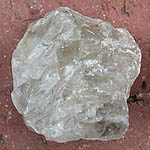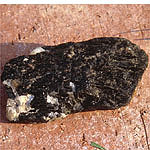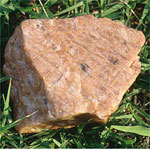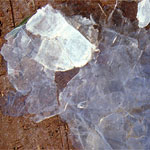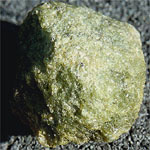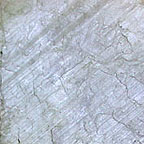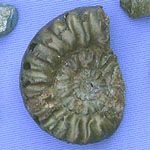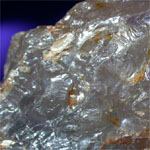|
Mineral
|
Photo
|
Physical Properties
|
|
|
|
Brown to brownish black; vitreous luster; H = 2.5 to 3.0; D = 2.8 to 3.2; may give a brown-gray streak; individual crystals are commonly small and cleavage surfaces are wavy; one perfect cleavage; transparent, flexible and elastic in thin sheets.
|
|
|
|
Clear, white, other colors less common; vitreous luster; H = 3; D = 2.7; three perfect cleavages form rhombohedric cleavage fragments; double image seen through clear pieces; reacts strongly with dilute hydrochloric acid.
|
|
Fluorite
|
 |
|
|
|
|
Most commonly reddish brown or yellowish tan; vitreous to resinous luster; H = 6.5 to 7.5; D = 3.6 to 4.3; twelve-sided crystals (diamond-shaped faces) or roughly spherical crystals common. Broken surfaces may resemble cleavage in some large (> 1 cm) samples.
|
|
|
|
Clear to gray to red; H = 2.5; D = 2.2; three perfect cleavages meet at 90 degrees (cleavage surfaces may be dull and partially dissolved after prolonged exposure); salty taste.
|
|
|
|
Black; H = 5 to 6; D = 3.0 to 3.4; vitreous luster; may have faint green-gray streak; two perfect cleavages meet at 124 degrees and 56 degrees, but cleavage faces are commonly stepped rather than smooth; splintery appearance. An amphibole mineral.
|
|
|
|
Salmon-pink, white, gray, green; vitreous luster; H = 6; D = 2.5 to 2.6; two cleavages meet at nearly 90 degrees; no striations.
|
|
Magnetite
|
|
|
|
|
|
Colorless, silvery white, brownish silvery white; vitreous luster; H = 2.0 to 2.5; D = 2.8 to 2.9; one perfect cleavage; transparent, flexible, and elastic in thin sheets.
|
|
|
|
Olive-green to yellow green; vitreous to dull luster; H = 6.5 to 7 but often difficult to test because many samples are granular aggregates.
|
|
|
|
White to dark gray; sometimes buff; vitreous luster; H = 6; D = 2.6 to 2.8; two cleavages meet at nearly 90 degrees; some cleavage faces have very fine, perfectly straight parallel striations, which show up in reflected light.
|
|
|
|
Brass-yellow; H = 6 to 6.5; D = 5.0; greenish black to black streak; massive or as crystals (cubes or pyritohedra).
|
|
|
|
Coarsely crystalline varieties: clear, milky, white, purple, smokey gray; pink; transparent to translucent; vitreous luster; H = 7; D = 2.7; conchoidal fracture; usually massive but six-sided crystals popular in rock shops.
|

